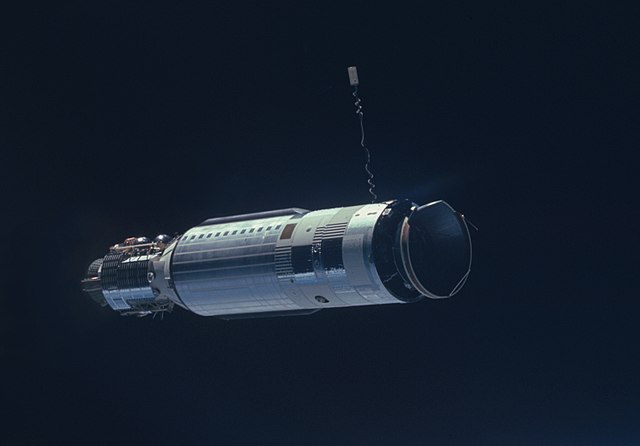A space station is a spacecraft capable of supporting a human crew in outer space for an extended period of time and is therefore a type of space habitat. It lacks major propulsion or landing systems. An orbital station or an orbital space station is an artificial satellite. Stations must have docking ports to allow other spacecraft to dock to transfer crew and supplies. The purpose of maintaining an orbital outpost varies depending on the program. Space stations have most often been launched for scientific purposes, but military launches have also occurred.
Gemini 8 Agena target vehicle
Gemini 8 docking with the Agena in March 1966
The U.S. Skylab station of the 1970s
Mir station seen in 1998
A spacecraft is a vehicle that is designed to fly in outer space and operate there. Spacecraft are used for a variety of purposes, including communications, Earth observation, meteorology, navigation, space colonization, planetary exploration, and transportation of humans and cargo. All spacecraft except single-stage-to-orbit vehicles cannot get into space on their own, and require a launch vehicle.
More than 140 Soviet and Russian crewed Soyuz spacecraft (TMA version shown) have flown since 1967 and now support the International Space Station.
The first artificial satellite, Sputnik 1, launched by the Soviet Union
Apollo 17 Command Module America in lunar orbit
American Mercury, Gemini, and Apollo spacecraft








